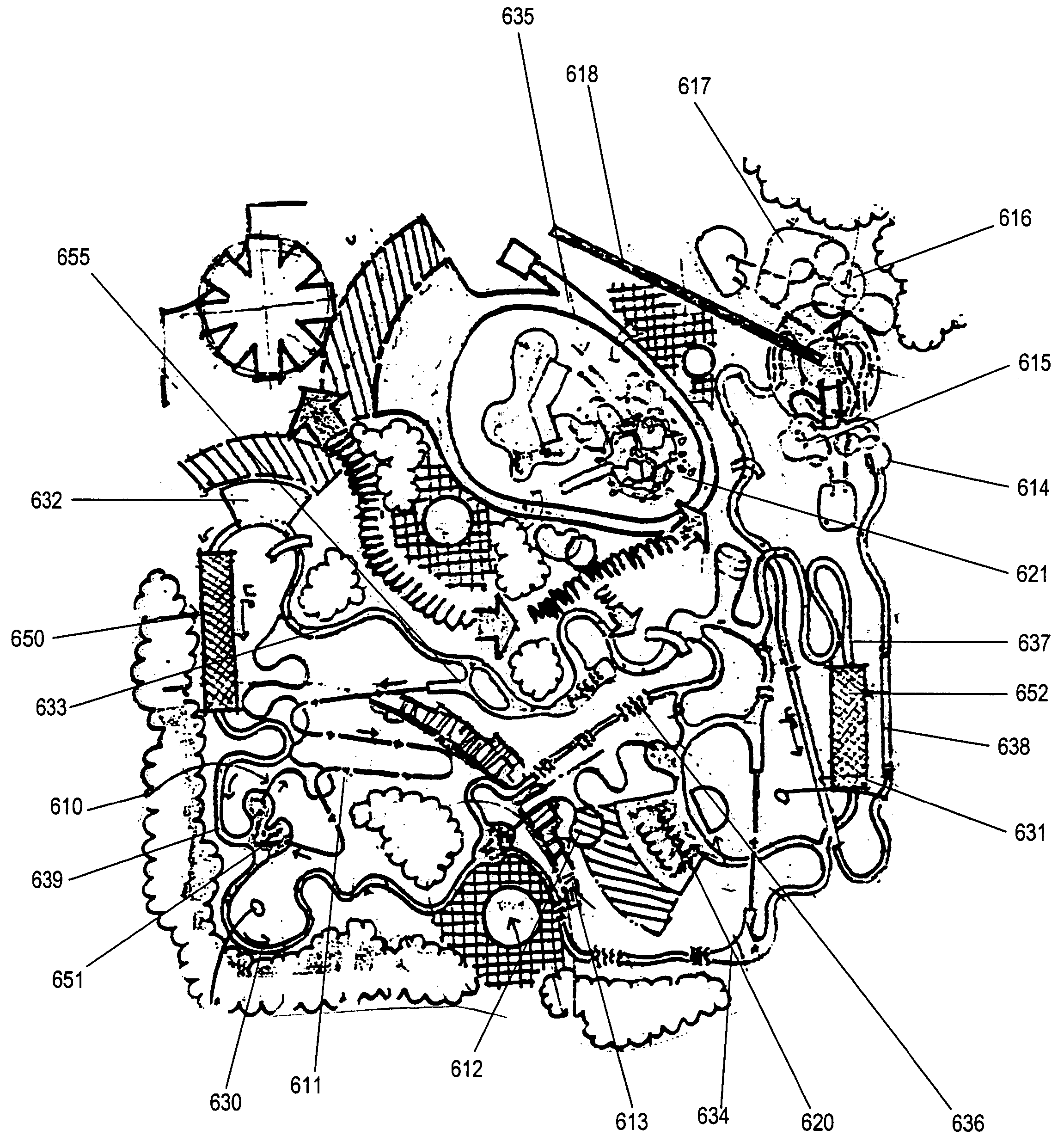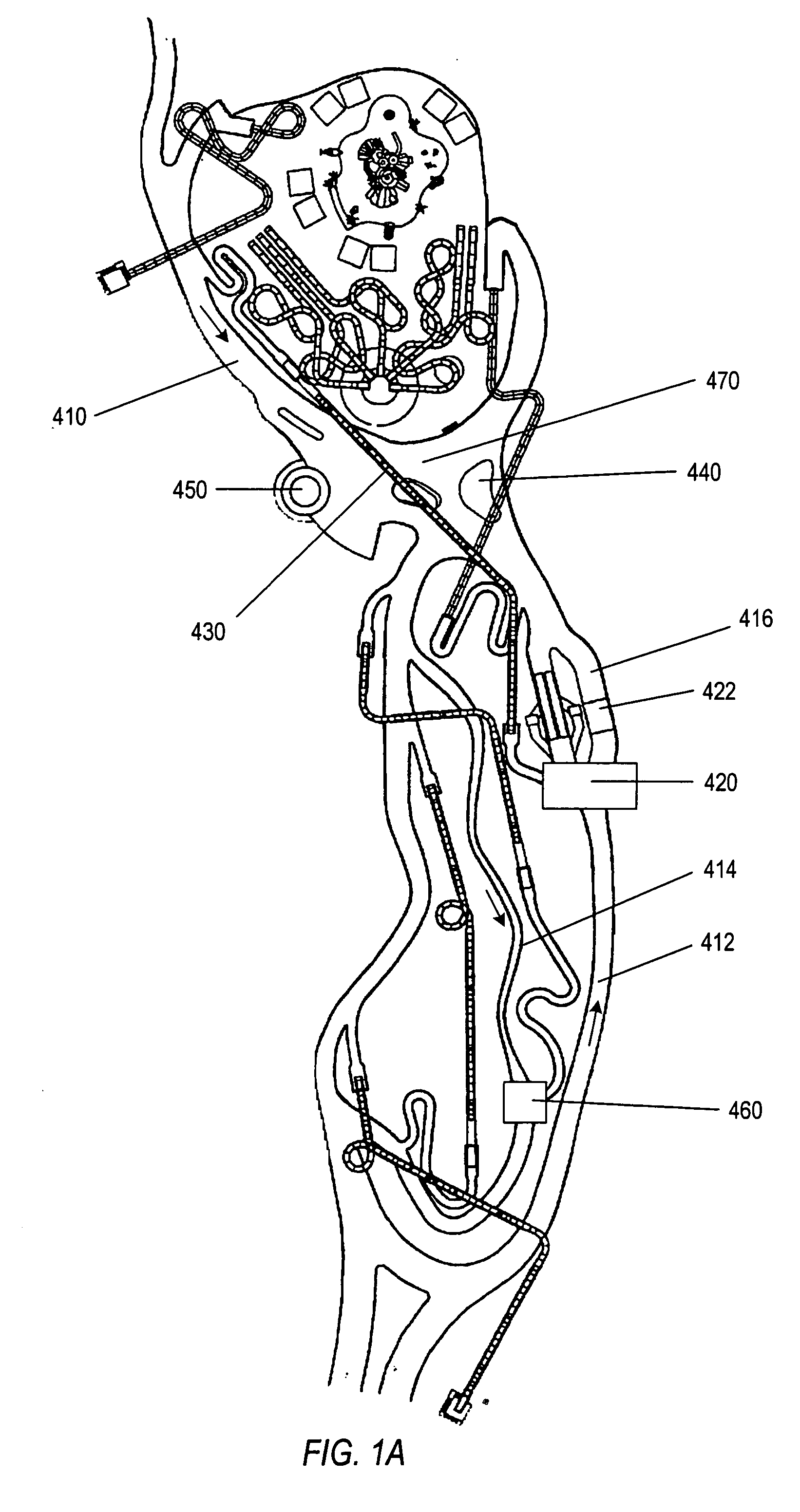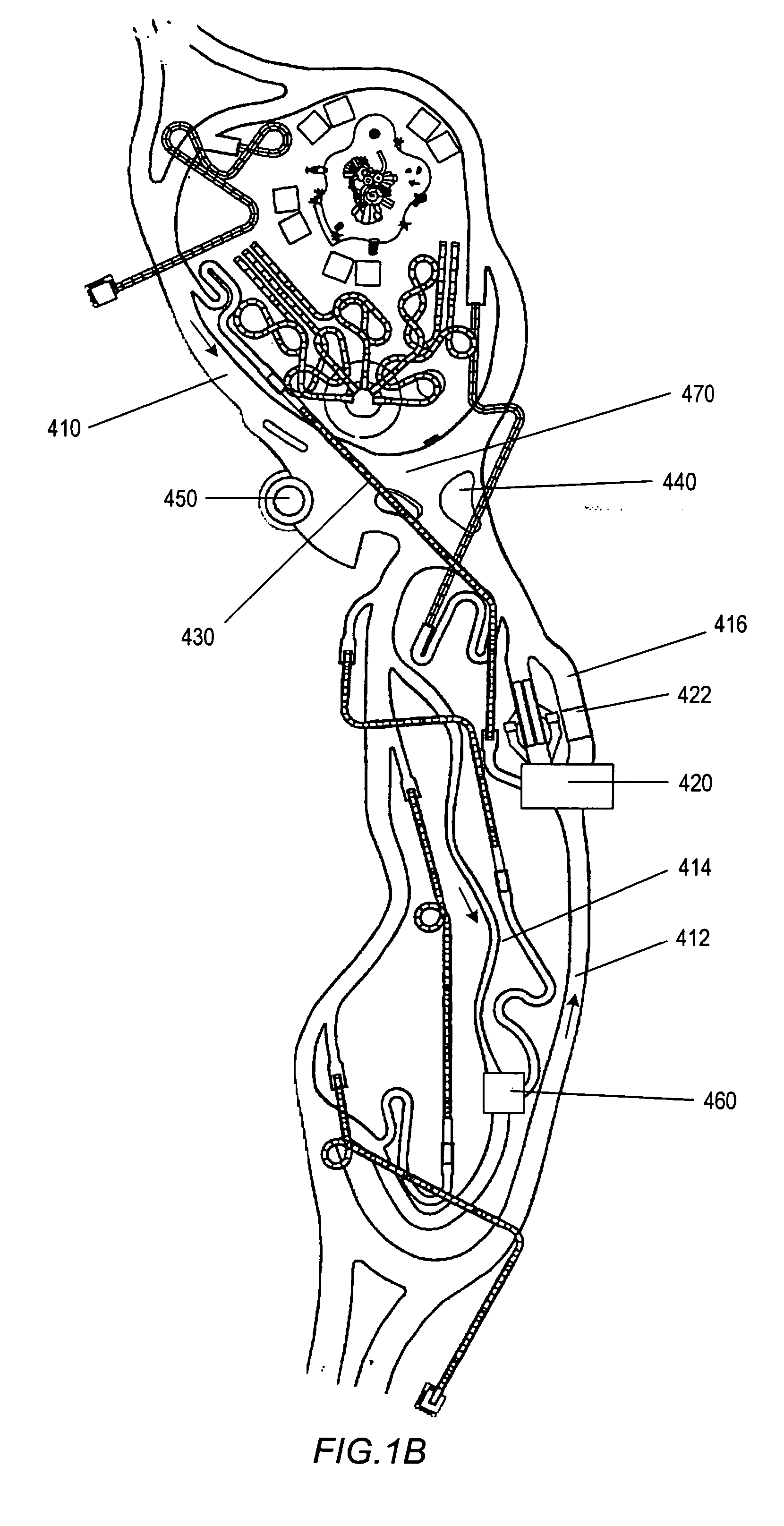Conveyor control system and method for water amusement parks
a control system and water transportation technology, applied in the field of water amusement parks, can solve the problems of limited throughput capacity, short duration of traditional downhill water rides, and long queue line waits, and achieve the effect of reducing or eliminating disadvantages and keeping riders cool
- Summary
- Abstract
- Description
- Claims
- Application Information
AI Technical Summary
Benefits of technology
Problems solved by technology
Method used
Image
Examples
Embodiment Construction
[0172]FIG. 1A depicts an embodiment of a water transportation system. The water transportation system is a system that couples two or more stations to each other via a channel. The channels allow participants to be transferred between stations while remaining in a water environment. As used herein stations may refer to a water park, water ride, lodging facility, body of water (natural or unnatural), transportation hub (e.g., monorail, bus, train station), parking lot, restaurant, or amusement park. Channel may refer to devices that are configured to hold water and to allow people to be transferred along the channel by the flow of water. Channels as defined herein includes plastic channels, concrete channels, rivers (both artificial and natural), water rides, pools, bodies of water, combinations of these devices or any other device configured to transport a participant between one station and an another station using water.
[0173] As shown in FIG. 1A, at least two channels, 410 and 4...
PUM
 Login to View More
Login to View More Abstract
Description
Claims
Application Information
 Login to View More
Login to View More - R&D
- Intellectual Property
- Life Sciences
- Materials
- Tech Scout
- Unparalleled Data Quality
- Higher Quality Content
- 60% Fewer Hallucinations
Browse by: Latest US Patents, China's latest patents, Technical Efficacy Thesaurus, Application Domain, Technology Topic, Popular Technical Reports.
© 2025 PatSnap. All rights reserved.Legal|Privacy policy|Modern Slavery Act Transparency Statement|Sitemap|About US| Contact US: help@patsnap.com



